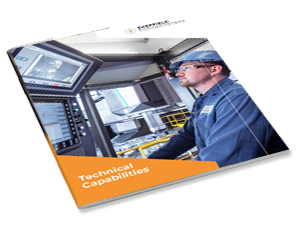Manufacturing is changing. The fourth industrial revolution is driven by the use of digital technology. We are implementing these technologies across our facilities to give us a state of the art, data-driven, digital manufacturing facility.
Traditional manufacturing got us to where we are today: manufacturing castings and forgings for some of the most demanding engineering challenges on Earth. Now, as part of a huge investment into the Company, we are embracing technology to move us forward into the digital manufacturing era. The journey has started and we are implementing digital technologies to understand and improve our manufacturing processes, plan the layout and capabilities of our new facilities, visualise data through virtual/augmented reality, take data-driven decisions and most importantly, improve our products, our efficiency and the service we provide to our customers.
Industry 4.0 involves the capture and analysis of manufacturing data. This data will be used to assess the live performance of our factory and allow us to take business decisions, improving our planning capability, efficiency and productivity.
We will do this throughout our facilities using:


Industry 4.0 involves the capture and analysis of manufacturing data. This data will be used to assess the live performance of our factory and allow us to take business decisions, improving our planning capability, efficiency and productivity.
We will do this throughout our facilities using:

Computer simulations have always been key to our manufacturing success. Whilst we have always simulated our products, we have not simulated our entire factory, until now. And not only are we simulating our existing factory, we are using discrete event simulations to plan and design our new facilities.
Using DES, we are:

Computer simulations have always been key to our manufacturing success. Whilst we have always simulated our products, we have not simulated our entire factory, until now. And not only are we simulating our existing factory, we are using discrete event simulations to plan and design our new facilities.
Using DES, we are:
Using digital data, we can bring our manufacturing facilities to life, through the use of virtual and augmented reality. Our plan is to be able to view our facilities digitally, to help us to teach our staff, contractors and visitors about or factory from within an office environment.
Virtual and augmented reality will also be used:


Using digital data, we can bring our manufacturing facilities to life, through the use of virtual and augmented reality. Our plan is to be able to view our facilities digitally, to help us to teach our staff, contractors and visitors about or factory from within an office environment.
Virtual and augmented reality will also be used:
